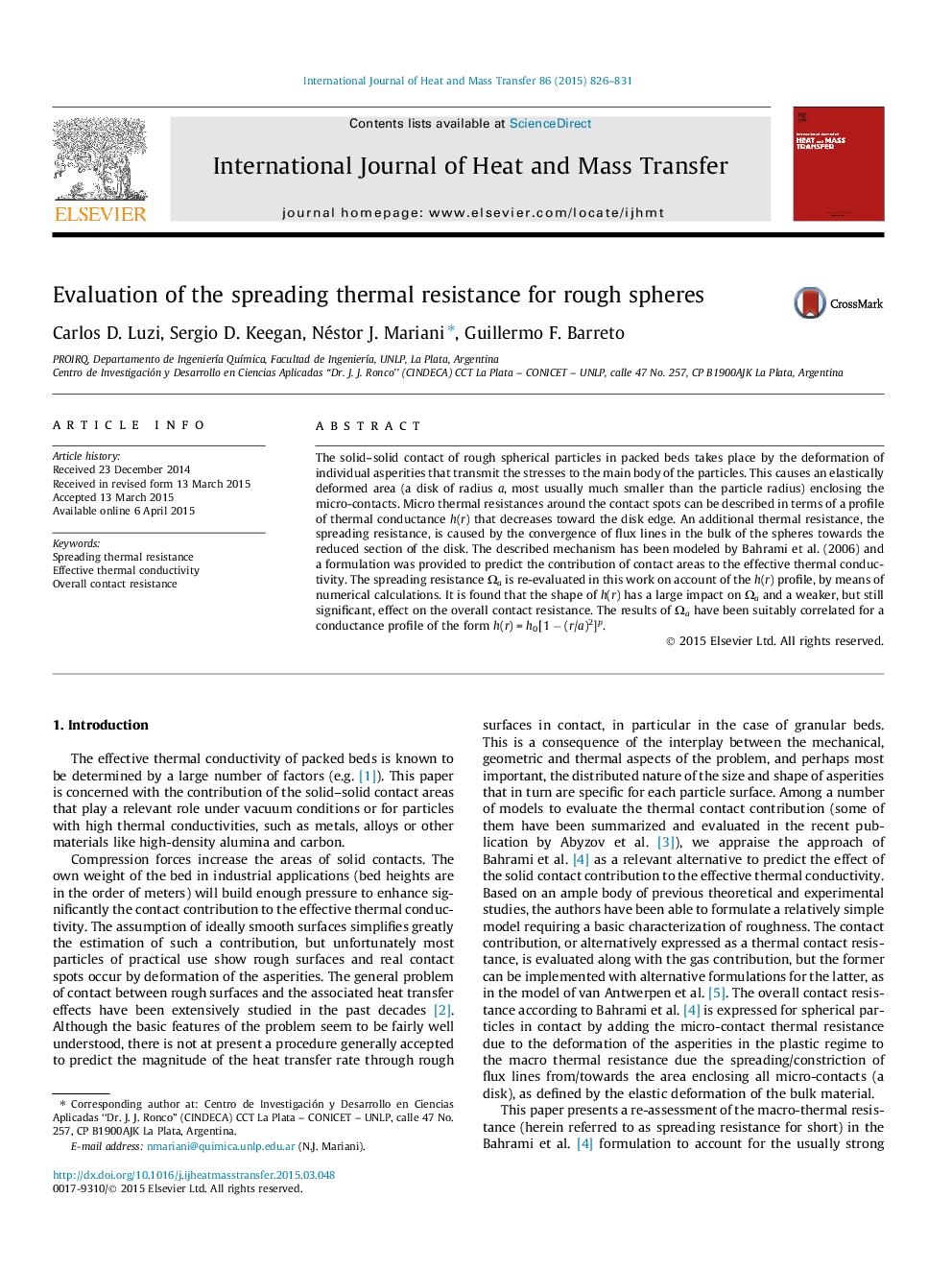| Article ID | Journal | Published Year | Pages | File Type |
|---|---|---|---|---|
| 656807 | International Journal of Heat and Mass Transfer | 2015 | 6 Pages |
The solid–solid contact of rough spherical particles in packed beds takes place by the deformation of individual asperities that transmit the stresses to the main body of the particles. This causes an elastically deformed area (a disk of radius a, most usually much smaller than the particle radius) enclosing the micro-contacts. Micro thermal resistances around the contact spots can be described in terms of a profile of thermal conductance h(r) that decreases toward the disk edge. An additional thermal resistance, the spreading resistance, is caused by the convergence of flux lines in the bulk of the spheres towards the reduced section of the disk. The described mechanism has been modeled by Bahrami et al. (2006) and a formulation was provided to predict the contribution of contact areas to the effective thermal conductivity. The spreading resistance Ωa is re-evaluated in this work on account of the h(r) profile, by means of numerical calculations. It is found that the shape of h(r) has a large impact on Ωa and a weaker, but still significant, effect on the overall contact resistance. The results of Ωa have been suitably correlated for a conductance profile of the form h(r) = h0 [1 − (r/a)2]p.
